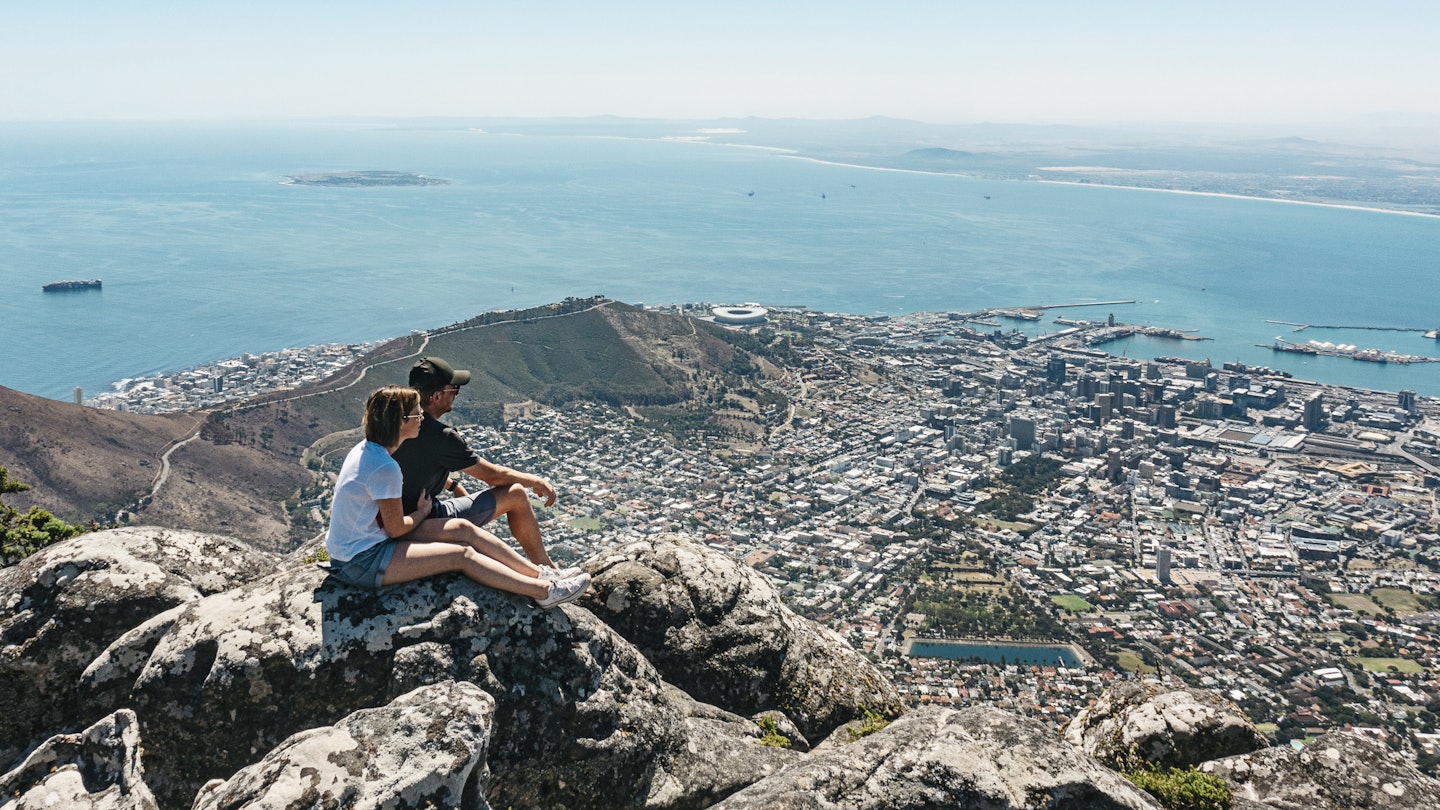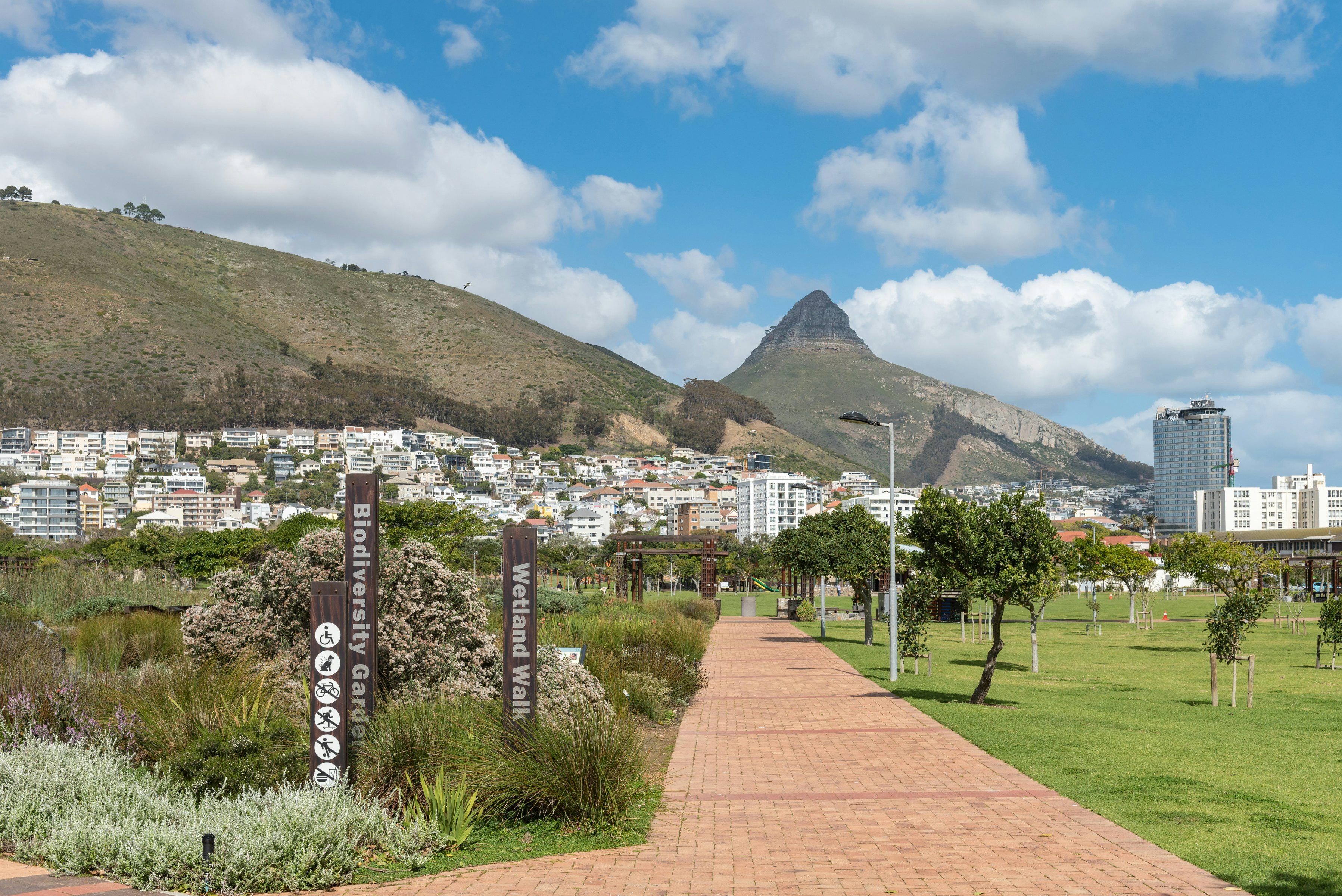
The 30 best countries, cities and regions to visit in 2025

The view from the top of Table Mountain, Cape Town, South Africa. Justin Paget/Getty Images
In a city surrounded by nature, the best things in life may indeed be free.
Enter Cape Town, where hiking trails crisscross Table Mountain and locals hit the beach before work. The 370-year-old-city’s diverse neighborhoods will give you a free show of delightful urban life (and though you’ll have to pay up to enjoy South Africa’s legendary food and wine, a weak rand keeps things reasonable for foreign visitors). Public gardens and colorful street tableaux reward quiet sitting and leisurely strolling.
These experiences will show you the best of Cape Town – and don’t cost a cent.
Hiking the trails of varying difficulty on Table Mountain is not just free: it’s a Capetonian rite of passage, with a reward of sweeping views at the top. The most popular route is Platteklip Gorge, which plows straight up the mountain’s front face, with the option of catching the revolving cable car back down.
From Kloof Nek, the Pipe Track contour path leads toward the buttresses of the Twelve Apostles, with Lion’s Head and Camps Bay Beach on your right. In the same area, Kloof Corner offers a relatively gentle climb, linking with the contour trail along the front face to the lower cable car station of Platteklip Gorge. Alternatively, climb from the mountain’s Camps Bay side via Kasteelpoort, or from Kirstenbosch National Botanical Garden via Skeleton Gorge or Nursery Ravine – or combine the two sides by crossing the tabletop plateau in the middle. You can also walk (or drive) along the adjoining flat-topped Signal Hill (aka Lion’s Rump), passing a kramat (Islamic shrine) en route to a viewpoint overlooking the Atlantic suburbs.
Planning tip: Time your visit with a full moon – then strap on a headlamp and follow nocturnal locals up Lion’s Head, when a chain of torchlight snakes up the leonine outcrop.

A wander through Cape Town’s lively city center is a totally free way to get to know the place. Start on the commercial and nightlife thoroughfare of Long St. Partly lined with Victorian-era buildings featuring lovely wrought-iron balconies, the street has seen its fortunes turn from disrepute to backpacker cool to gentrified.
The pedestrianized portion of Church St, between Long and Burg Sts, hosts a flea market and several interesting private art galleries. Burg St leads straight to cobbled Greenmarket Sq, the city’s second-oldest public space, which has a colorful craft market (see below) and some choice examples of art deco architecture.
Continuing toward the Castle of Good Hope, you’ll come across the Grand Parade. Its history is more impressive than the flea market and parking lot you see today: the Dutch built their first fort here in 1652; enslaved people were sold and punished here; and jubilant crowds gathered in 1990 to watch Nelson Mandela’s first address to the nation as a free man after 27 years in jail – delivered from the balcony of the Edwardian-era Cape Town City Hall.
Greenmarket Sq’s lively souvenir and textile market (open daily save Sundays) features vendors selling goods from all over Africa. Many traders are from the Democratic Republic of Congo and East Africa, and you’ll hear Swahili in addition to many other languages. You can buy plentiful ready-made items, or purchase cloth and get something made to order. (The vendors will be able to recommend a tailor, and most items can be ready within a few days.) Marimba players, drummers and other buskers make for a lively backdrop, especially on First Thursdays.
Planning tip: Saturday mornings are best, when vendors from all over the continent set up their stalls.

This historic working harbor has a spectacular setting and many visitor-oriented shops, restaurants, bars, cinemas and cruise opportunities. A pedestrian swing bridge opens for tugs, fishing boats and various other vessels to pass between the 19th-century Victoria and Alfred Basins (named for the British monarch and her son the crown prince). Discover the pedestrianized area’s maritime and military history on a walking tour – or just wander to the beat of buskers, checking out The Watershed craft market and Nobel Square’s statues of Nelson Mandela and other South African Nobel Prize winners.

If you’re traveling with children, there’s no substitute for blowing off steam in the park – and the city has some wonderful public gardens. The Dutch East India Company, which founded Cape Town as a refreshment station for its India-bound vessels, established Company’s Garden to grow fruit and vegetables for scurvy-ridden sailors; some of the trees here date to that 17th-century era. A statue of 19th-century British colonialist Cecil Rhodes, pointing to Cairo with the legend “your hinterland is there,” also nods to the city’s occupied past.
An eco-legacy of World Cup 2010 is Green Point Urban Park, which showcases the Cape’s biodiversity and provides a front-row view of Cape Town Stadium. Equally important are a fantastic play park and lawns for picnicking.
Deer Park (technically Rocklands Avenue Park) offers monkey-bar fun and an adjoining cafe in mountainside Vredehoek.
Join local families in southern suburbs favorites such as Keurboom Park, where little ones can enjoy the playground, bike paths and whimsical fairy garden. Slightly wilder, Tokai Park has walking trails through fynbos and pines, overlooked by the mountainous spine of the Cape Peninsula.

The “Upper Cape,” with its vividly painted low-roofed houses on narrow cobbled streets climbing Signal Hill, features in countless Cape Town visitors’ Instagram feeds. The area is the traditional home of the Cape Muslim (anachronistically known as the Cape Malay) community, with minarets among the cottages and stalls selling traditional snacks such as samosas and coconut-sprinkled koe’sisters.
Partly given over to tourism with complexes such as Mariner’s Wharf, Hout Bay’s harbor is still a working marina, and you can see vessels under repair on the eastern side beneath the Sentinel peak. This area is also home to the vibrant Bay Harbour Market, where you can catch live music on weekends.
Planning tip: While in the “Republic of Hout Bay” (the nickname for this independently minded suburb), head up to Constantia Nek to hike the rear of the Table Mountain plateau, or follow the contour trail to Kirstenbosch Gardens.

Strolling along Sea Point’s wide, paved, grassy promenade is a pleasure shared by Capetonians from all walks of life. Once a white-only area, it’s today a great place to observe the city’s multicultural tableau.
Planning tip: There are kids’ playgrounds and several public artworks to capture your attention. And if you want to get that heart rate up a little more, head for the outdoor gym.
There is a small charge to drive along the Atlantic coast south from Hout Bay via the spectacular Chapman’s Peak Drive toll road (R64; US$3.33). Yet it’s worth paying to access the gateway to the Lentil Curtain, as the hippy-ish suburbs of Noordhoek and Kommetjie are known. Here, you can get a taste the Cape Peninsula’s laid-back southern reaches without paying to enter the reserve at its tip (which merits a full day in itself). From the beach town of Scarborough, cross the rocky hinterland to quaint Simon’s Town (the headquarters of the South African Navy) and the African penguin colony at Boulders Beach.
Planning tip: For the return journey, save the cost of the toll by heading back alongside False Bay, stopping in picturesque Kalk Bay or family-favorite Muizenberg.

Looking down from the Pipe Track, you’ll take in some of Cape Town’s most beautiful Atlantic beaches. Separated from a chic promenade of sundowner spots by palm trees and a grassy bank, Camps Bay is a gorgeous sweep of soft sand. Its less appealing aspects include wind exposure and freezing water – so many locals prefer Clifton’s sheltered beaches, which are demarcated by giant granite boulders. With a backdrop of hillside beach houses and Lion’s Head, you can’t go wrong with the scenic quartet, whether for lazy days or candlelit evening picnics.
Further south, Llandudno Beach is another mountain-cocooned gem, while Noordhoek and Kommetjie share the last word in vistas with their views of Chapman’s Peak and Hout Bay.
Located on the peninsula’s False Bay side, both Muizenberg and St James beaches have much warmer water than on the Atlantic coast. Families tend to head here to spend a day in the shadow of the colorfully painted Victorian chalets that line both beaches. On the northern side of town, the beaches of Bloubergstrand have a showstopping view of Table Mountain across Table Bay, its waters flecked with kite-surfers and windsurfers.
Plan with a local
